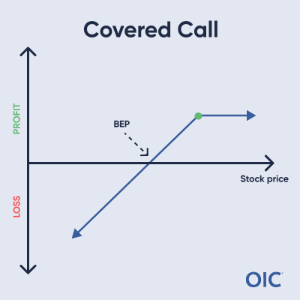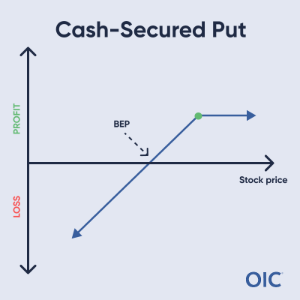June Webinar Key Takeaways: Generating Premium Income With Option Strategies
In June, OIC hosted two webinars, Premium Income I: Covered Calls and the Poor Man’s Covered Call and Premium Income II: Cash-Secured Puts & the Wheel Strategy, led by Ken Keating, OIC Instructor and Principal, Investor Education, OCC. The sessions focused on premium income generation through options trading, illustrating both the risks and potential benefits involved.
In the first webinar Ken detailed the mechanics of covered calls, including the obligation to sell shares at the strike price if assigned, and the impact of early exercise, particularly concerning dividends. He also introduced LEAPS®; (Long-term Equity Anticipation Securities®;) as a possible alternative to traditional covered calls.
In the second webinar, Ken explained cash-secured puts as a method to potentially buy stock at lower prices while generating premium income, and the wheel strategy, which combines cash-secured puts and covered
calls in a rotating fashion. Ken also introduced the bull put spread as a possible alternative to mitigate risks, discussing considerations for strike selection, expiration scenarios, and assignment risks.

What We Covered:
- Covered Call Strategy: Covered calls generally involve selling an at-the-money or out-of-the-money call against a long stock position to generate premium income, designed for neutral to moderately bullish market conditions.
- Covered Call Risk: The risk in covered calls lies in the long stock position, with potential losses if the stock price falls below the break-even point.
- Rolling Covered Calls: “Rolling up” covered calls can afford more upside potential and is accomplished by buying back the short call and opening a new short call position at a higher strike price.
- Capital Efficiency that may result from LEAPS®: LEAPS®, longer-dated options, offer capital efficiency and leverage but come with risks like the cost of time value, long Vega exposure, and wider bid-ask spreads.
- The Poor Man's Covered Call Strategy (PMCC): The PMCC strategy uses LEAPS®; as a stock substitute, designed to reduce downside risk and capital requirements compared to traditional covered calls.

- Cash-Secured Put Strategy: Cash-secured puts involve selling puts with sufficient cash to collateralize the potential assignment obligations with the intention of purchasing stocks at lower prices while generating premium income.
- The Wheel Strategy: The wheel strategy combines cash-secured puts and covered calls in a rotating fashion by selling puts then, if assigned the shares, possibly selling calls against the long stock position.
- Bull Put Spread Strategy: Bull put spreads involve being short a put option and long another put option with the same expiration but with a lower strike. This strategy can mitigate the downside directional exposure associated with cash-secured puts.
- Implied Volatility (IV): Implied volatility is a measure of how much the marketplace expects an asset price to move during the life of an options contract and is derived from the option price. That is, the volatility that the market implies. The implied volatility level can be a measurement or reference point for investors as they open or close positions. Changes in IV are measured by the Greek known as Vega which, along with Delta and Theta, estimate how an option price might be affected by changes in IV, changes in the stock price, and the passage of time.
Keep Learning:
- Key Moments From Premium Income I: Covered Calls and the “Poor Man’s” Covered Call (PMCC)
- Key Moment From Premium Income II: Cash-Secured Puts & the Wheel Strategy
Meet OIC instructor Ken Keating:

Ken Keating
Ken began his 25-year trading career at Group One Trading in 1993 on the floor of the PSE (Pacific Coast Stock Exchange) and later transitioned to the floor of the CBOE (Chicago Board Options Exchange), and Peak6 Capital Management. He has held positions as a floor market maker, floor specialist, risk manager, off floor prop-trader, and options portfolio manager.
LEAPS® is a Registered Trademark of the Chicago Board of Options Exchange (Cboe)

